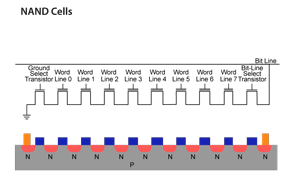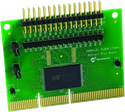We offer a wide range of NOR Flash products in a variety of bus interfaces, speeds, voltages and packages. Below are some things to consider when selecting a Flash solution:
NOR vs. NAND Flash


Parallel vs. Serial SPI vs. Serial SQI™ Flash Devices
What Are SQI Flash Devices?
Serial Quad I/O™ (SQI) Flash devices read and write through a 4-bit multiplexed synchronous serial communication interface, which enables true low pin-count, high-bandwidth code Execution-in-Place (XIP) applications. The firmware commands are very similar to those of SPI, but with 4-bit I/O instead of single-bit I/O. Therefore, this interface provides approximately four times the data throughput of SPI. Compared to parallel Flash devices, SQI Flash devices provide very fast performance without requiring large, expensive and high-pin-count packages.

What is Common Flash Memory Interface (CFI)?
What is Execution In Place (XIP)?
What is Serial Flash Discoverable Parameter (SFDP)?
Serial NOR Flash Memory (SPI, Quad SPI/QSPI) Products by Density
Parallel NOR Flash Memory Products by Density
.png)
Serial SuperFlash® Kit 2
Part Number: AC243008
The Serial SuperFlash Kit 2 contains three serial Flash daughter boards that are designed to interface with the mikroBUS™ connector on the Explorer 16/32 Develoment Board.

SQI SuperFlash Kit 1
Part Number: AC243009
The SQI SuperFlash Kit 1 contains three serial Flash daughter boards that are designed to interface with the mikroBUS connector on the Explorer 16/32 Develoment Board.

Parallel SuperFlash Kit 1
Part Number: AC243006-1
This evaluation kit contains two parallel Flash PICtail™ Plus Daughter Boards that are designed to interface with the PICtail Plus connector on the Explorer 16 Development Board.